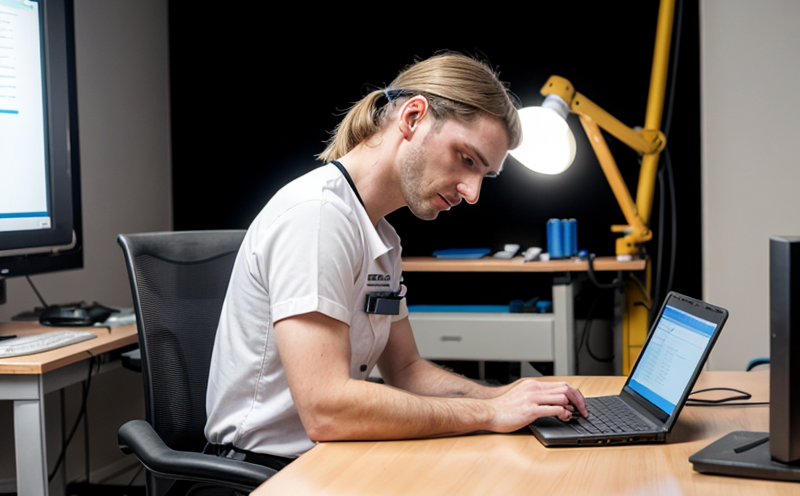Human Factors & Ergonomics Testing
In aerospace and aviation testing, human factors and ergonomics play a critical role in ensuring the safety, comfort, and efficiency of flight operations. The focus is on understanding how human beings interact with aircraft systems, controls, and environments to enhance performance and reduce errors.
The discipline involves analyzing physical and mental demands placed on pilots and passengers during various phases of flight. This includes evaluating cockpit layout, instrument design, seating arrangements, workload management, and emergency procedures. By incorporating ergonomic principles into the design process, manufacturers can improve user interface ergonomics which ultimately contributes to reduced stress levels among personnel.
One key aspect of this type of testing is the assessment of human capabilities under extreme conditions such as high altitude altitudes or rapid acceleration/deceleration cycles. Ensuring that pilots and other crew members are able to effectively operate equipment despite these challenging situations is paramount for operational safety.
The importance cannot be overstated; improper design could lead to critical failures during critical moments, potentially resulting in severe consequences including accidents or loss of life. Therefore, comprehensive testing methodologies have been developed to address potential issues before they become actual hazards.
Scope and Methodology
| Aspect |
Description |
| Ergonomic Assessment |
Evaluation of the physical dimensions and characteristics that influence comfort, efficiency, and effectiveness in tasks. |
| Cognitive Load Analysis |
Measurement and management of information processing demands on users to prevent cognitive overload. |
| User Interface Design Review |
Inspection of interfaces for ease-of-use, clarity, and consistency with established standards. |
Industry Applications
- Evaluating cockpit layouts to optimize pilot visibility and accessibility
- Analyzing cabin configurations for passenger comfort during long-haul flights
- Determining the most effective placement of controls within reach for flight attendants
Environmental and Sustainability Contributions
- By improving design ergonomics, reducing fatigue among crew members can lead to enhanced fuel efficiency.
- Ergonomic improvements contribute to better resource allocation within aircraft interiors minimizing waste generation.
- The reduction in ergonomic errors translates into lower maintenance costs over the lifecycle of an aircraft.
Frequently Asked Questions
What does ergonomics mean in aviation?
Ergonomics refers to designing systems and environments based on human characteristics, capabilities, limitations, and behaviors. In aviation, it ensures that pilots can operate aircraft safely by considering the physical dimensions of controls as well as cognitive loads required during different phases of flight.
How do you measure ergonomics in a cockpit?
Measuring ergonomics involves several key parameters including reachability to controls, visibility through instrument panels, and the overall layout of the cockpit. These metrics are compared against industry standards like ISO 19736 which provides guidelines for ergonomic design.
Why is it important?
Improper ergonomic design can lead to increased stress on pilots, leading to mistakes that might compromise safety. Proper ergonomics ensures that all crew members are comfortable and can perform their duties without undue strain.
What role does cognitive load play?
Cognitive load refers to the amount of mental effort required by a person to process information. In aviation, reducing this load is crucial because it directly impacts decision-making abilities during emergencies or high-stress situations.
Are there specific tests performed?
Yes, various tests are conducted including usability studies where pilots interact with prototypes under simulated flight conditions. Additionally, workload simulations help determine whether the proposed design meets ergonomic expectations.
What benefits does this bring?
Benefits include improved safety by preventing human error due to poor design; increased productivity through more efficient workspaces; and enhanced passenger experience via comfortable seating arrangements and intuitive interfaces.
Can you provide examples of successful implementations?
Certainly. Airbus has implemented several ergonomic features in its A350 XWB which include adjustable seat positions, improved lighting systems, and optimized control surfaces layout. Boeing also incorporates ergonomics into their 787 Dreamliner, focusing particularly on reducing pilot fatigue through better cockpit visibility and more intuitive displays.
Is this applicable only to commercial aviation?
No, human factors and ergonomics are relevant across all sectors of aviation including general aviation, military aircrafts, drones, etc. Each segment has unique challenges but the underlying principles remain consistent - ensuring that people operate within their optimal physical and mental boundaries.





